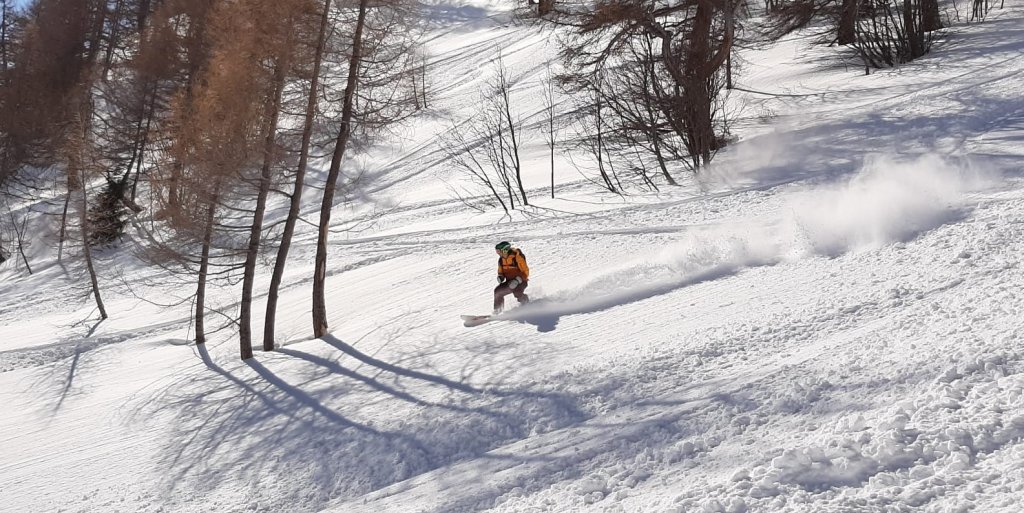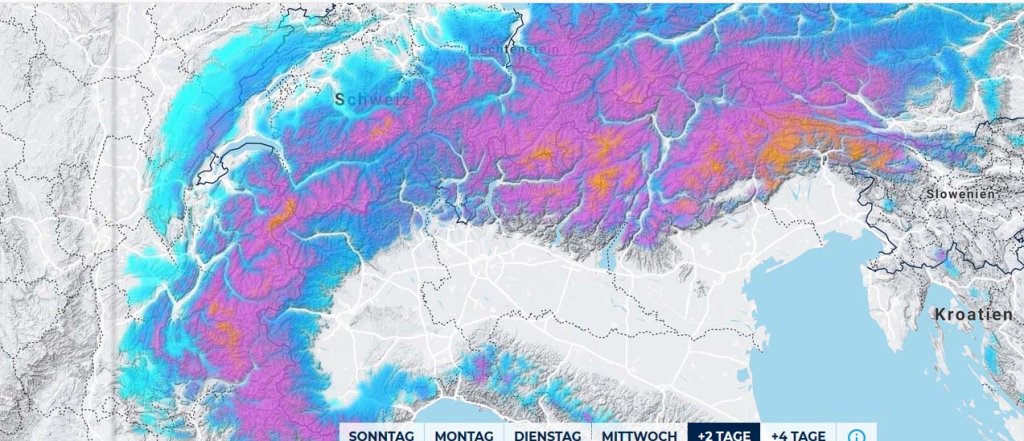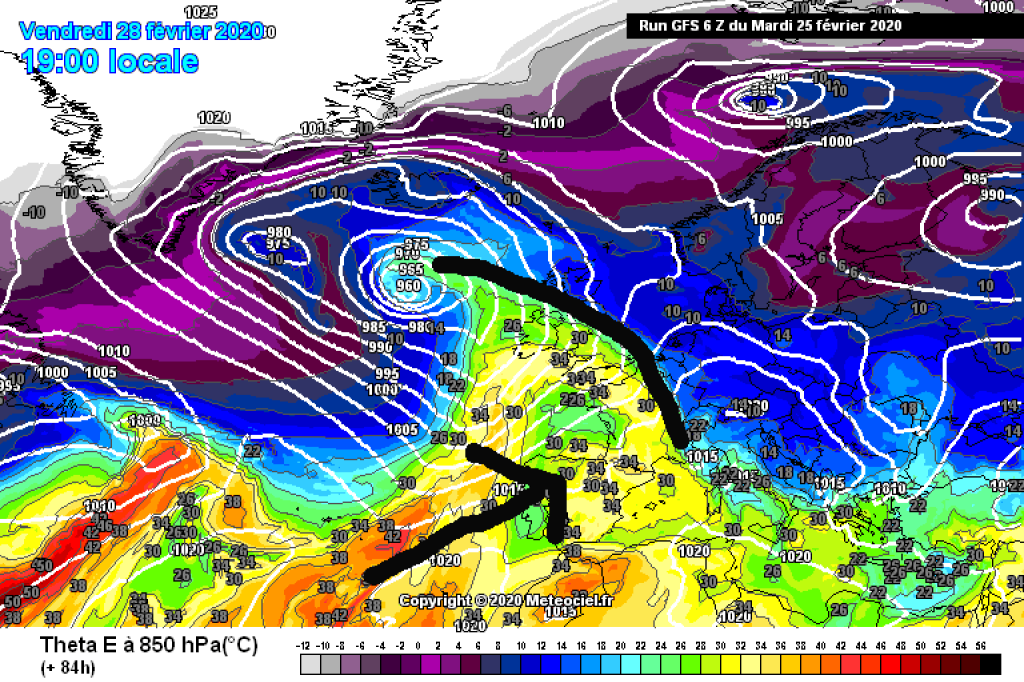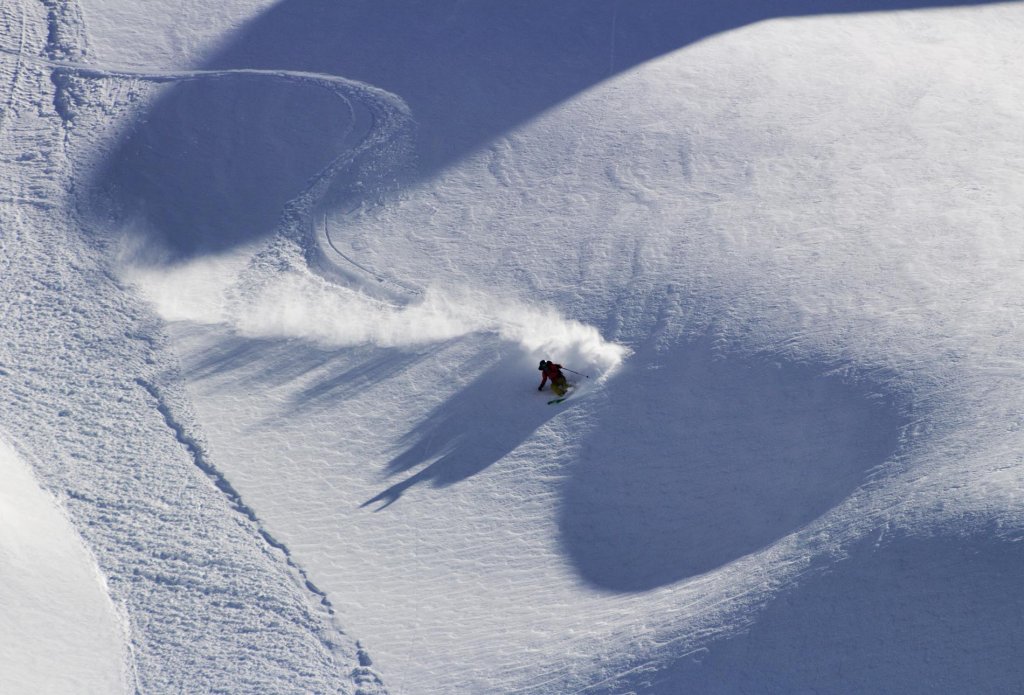The oracle is still enjoying the memories of alert 14, but Ullr is not letting up and is sending us further disturbances from the west and southwest into the Alps, so that the regions continue to be supplied with snow. The current also has a southerly component and so it's snowing in the south again for the first time in a while. After that, it's going to be a lively week and there should be another alarm on Tuesday. More on this in the medium term.
Alert period and areas
It is snowing from France across the Maritime Alps and from Ticino to the east in alarm-worthy amounts. However, the core lies from Trentino via the Dolomites to the border triangle near Slovenia. Most of all, as usual in such a situation, in the Julian Alps.
The northern Alps and especially the north-east will be left out in the cold. It's more likely to be foehn-like.
The alert will last until Tuesday morning, with only a short break on Tuesday before it theoretically snows again.
Wind
Hold on tight, it won't be very windy. Even at 3000m, the models are only seeing some blustery winds here and there where it's snowing. So for what seems like forever, Ullr has been sending us lots of snow and quite little wind.



